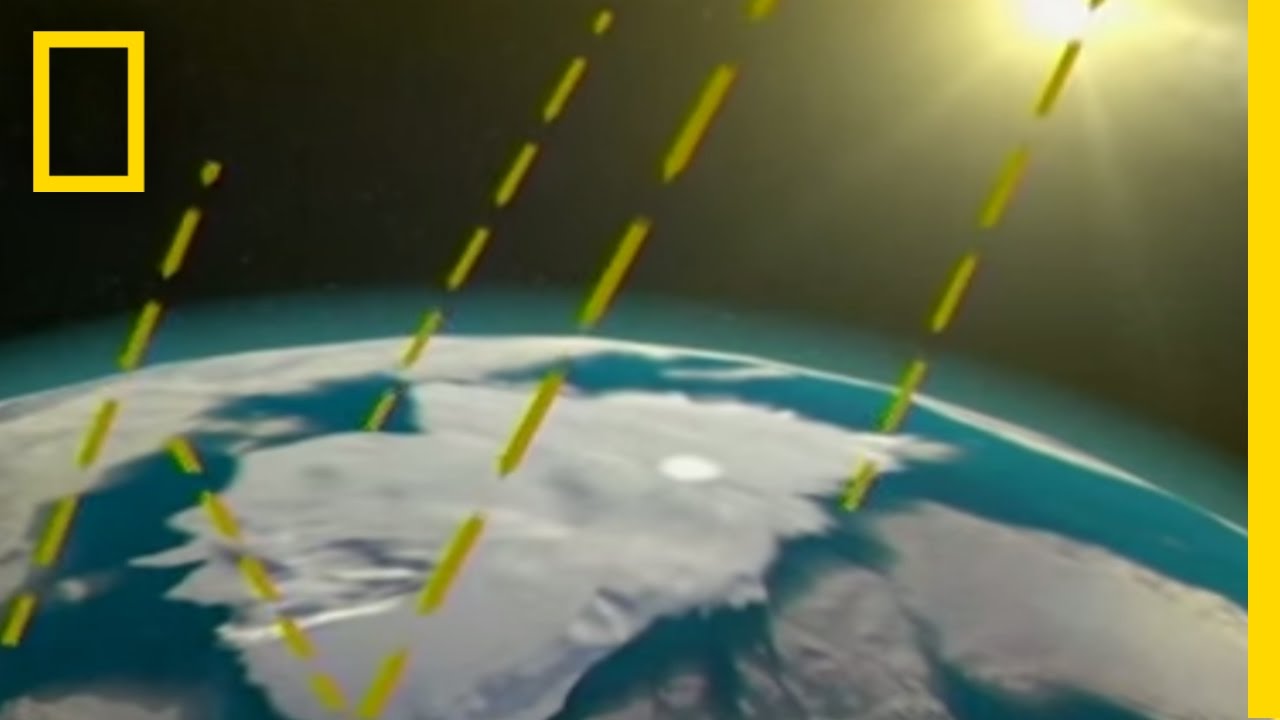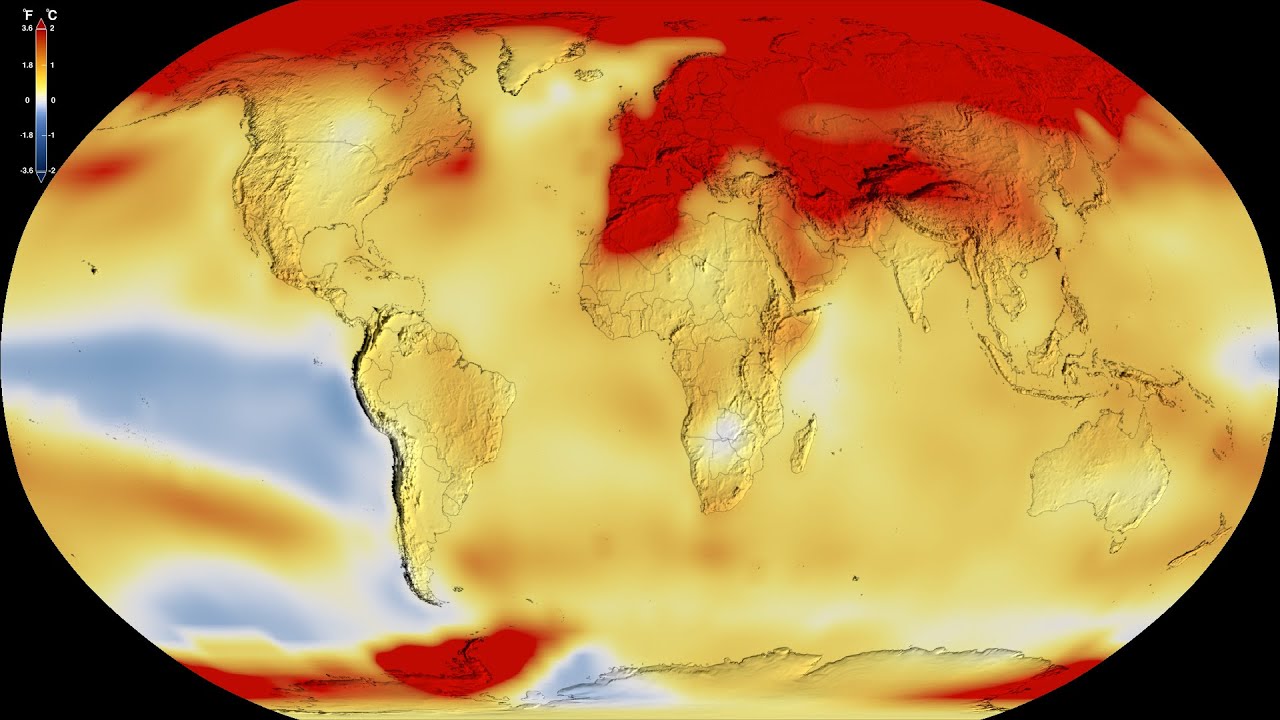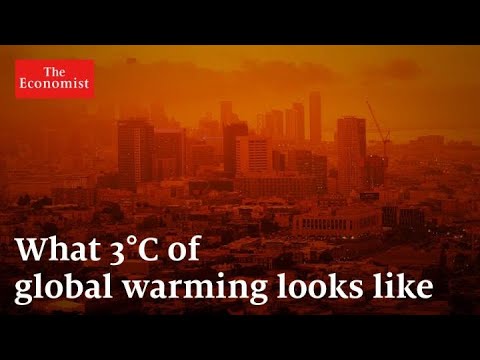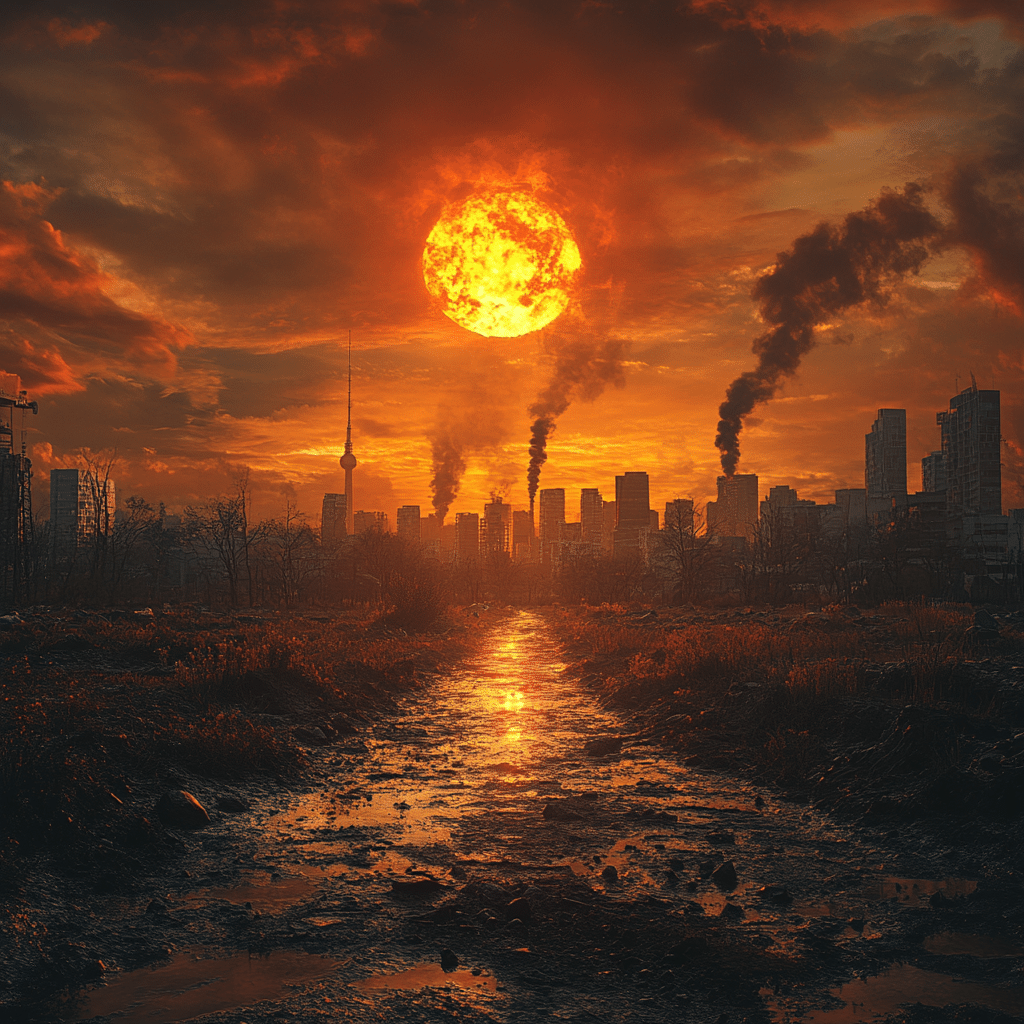Global warming is here, and it’s hitting harder than ever. We’re not just talking about rising temperatures a few decades down the line; this is an immediate crisis reshaping our planet as we speak. It’s driven primarily by greenhouse gas emissions and human activity, causing communities across the globe to feel the impact. From coastlines disappearing due to rising sea levels to unpredictable weather patterns that make it hard to plan even a simple picnic, the effects are staggering. Our oceans are warming and becoming more acidic, while ice caps are melting faster than a popsicle on a summer’s day. This section unpacks the scientific reality of global warming, revealing long-term implications for our ecosystems, including the fragile coral reefs, the freezing Arctic territories, and our lush forested regions.
As the thermometer rises, we’re witnessing alarming changes right before our eyes. The average surface temperature of our planet has creeped up by about 2 degrees Fahrenheit (1 degree Celsius) since the late 19th century. That’s not just a number; it translates into extreme weather events, heat waves that can turn deadly, and hurricanes that are stronger and wetter than we’ve ever seen. Just imagine—each time we get into our cars or flick on the lights, we’re contributing to this climate crisis. With the stakes this high, it’s clear that the time for action is now.
But wait, what exactly does global warming do? It jumbles natural systems, creating havoc for many species trying to adapt. From rising sea levels threatening island nations to droughts devastating agriculture, the ripple effects extend to all of us. The way we live our lives today has a lasting impact that ripples through generations. Our responsibility doesn’t stop at awareness; it extends to action—action that can reverse the damage done to our environment and pave a way for a sustainable future.

Top 7 Innovative Solutions to Reverse the Damage of Global Warming
Companies like Climeworks are stepping up to the plate with direct air capture technology, aiming to trap CO2 right from the air and store it underground. Picture it as a giant vacuum cleaner for our atmosphere! Scaling these innovative technologies is essential for drastically reducing the carbon footprint of industries and could be a genuine game changer.
Look over at Denmark, which has become a leader in harnessing wind power—nearly 50% of its energy comes from wind! With countries reassessing their energy policies, the swift move toward renewable sources like solar and wind is imperative to cutting down on those pesky carbon emissions.
Projects like the Bonn Challenge are aiming to restore around 350 million hectares of degraded land by 2030. This bold initiative boosts biodiversity and enhances carbon sequestration, meaning more trees to absorb that CO2 and less damage from global warming. Just think of trees as nature’s sponges, soaking up carbon while also giving life to countless species.
Have you heard about regenerative agriculture? It’s all the rage among farmers seeking to improve soil health through practices like cover cropping and reduced tillage. Research from the Rodale Institute suggests these methods not only enhance food security but also sequester carbon—talk about a win-win!
The revolution is underway, and it’s electric! Companies like Tesla are at the forefront, pushing electric transportation networks that cut down our reliance on fossil fuels. With governments around the globe promising to phase out gasoline vehicles, the adoption of EVs is increasingly seen as vital to tackling global warming.
Buildings like The Edge in Amsterdam showcase amazing advancements in green architecture. By incorporating energy-efficient designs and sustainable building materials, the construction industry can drastically cut down energy consumption and minimize carbon footprints. Imagine living and working in spaces that don’t just shelter you, but also nurture the planet.
Grassroots movements, like those led by organizations such as 350.org, are essential in mobilizing communities and advocating for strong policies supporting a sustainable future. By uniting voices and pushing for change, we can give global warming a run for its money and foster community resilience in the face of climate challenges.

The Role of Individuals in Combating Global Warming
While large-scale solutions are critical, let’s not forget that each one of us matters! Every little action counts in the fight against global warming. Whether it’s reducing meat consumption, opting for public transport, or pushing for policies that emphasize climate-consciousness, personal lifestyle changes can have a significant impact. Look at activists like Greta Thunberg—she’s continually inspiring others and raising awareness about the climate crisis, reminding us that collective action starts at the individual level.
Imagine the ripple effect if we all made small changes. If a million people decided to skip meat on Mondays, the reduction in CO2 emissions would be equivalent to removing hundreds of thousands of cars off the road! It’s not just about personal choices—it’s about igniting passion in those around us to act, discuss, and advocate for climate consciousness. Every voice counts, and when united, they create a mighty chorus that can’t be ignored.
So let’s not sit idly by while our planet suffers. It’s time to roll up our sleeves and join the fight against global warming. Each step you take not only matters but also inspires others to follow in your footsteps, creating a growing movement for change.

The Path Forward: Integrating Solutions for a Sustainable Future
With global warming transforming our environment, it’s time to shift gears and embrace proactive solutions. By integrating technological innovations, sustainable practices, and community involvement, we can forge a clear path forward. This convergence plays a critical role in addressing the ongoing climate crisis. We have to acknowledge where we’ve gone wrong and work towards sweeping solutions that promote not just environmental health, but social and economic resilience as well.
Imagine a world where our crisp air is filled with the sounds of thriving wildlife, where communities flourish without fearing each season’s weather extremes. Integrated strategies aren’t merely future goals; they are essential for crafting a sustainable planet. Every community, every individual, every corporation can contribute to this vision. It’s about lifting each other up and fueling this transformative movement with passion, determination, and shared responsibility.
By working together and taking decisive action, we can indeed reverse the damage of global warming. The urgency is now, but the hope is tangible. The decades ahead hold the promise of a revitalized planet, one where our collective efforts heal the wounds inflicted upon our environment. Let’s ignite that fire, fuel that momentum, and make history together!
For more information on how to engage speakers who can inspire and educate on global warming, check out our one sheet example. As we move forward, let’s all commit to making a difference; remember, the future can be brighter if we choose to act today!

Global Warming: Fun Trivia and Interesting Facts

The Surprising Facts About Global Warming
Did you know that global warming isn’t just an environmental issue but also a major player in our economy? It’s estimated that climate change could cost the global economy over $23 trillion annually by 2050 if no substantial action is taken. This staggering figure puts a spotlight on how tightly interwoven our lives are with climate action, much like how a group of friends at a local spot like Szechuan House bonds over their love for spicy food—sharing the responsibility while savoring their favorites. Consequently, we’re all in this together!
Speaking of interconnectedness, global warming impacts biodiversity significantly, with animal species facing heightened extinction risks. For instance, coral reefs, which support an astonishing number of marine species, are disappearing due to rising ocean temperatures and acidification. It’s a tough fight, similar to who won The fight between those determined to save our planet versus those who think climate change is a hoax. It’s truly amazing how, just like the collaboration seen in a condo association, collective efforts make all the difference in tackling these pressing issues.
The History Buff’s Perspective
Now, let’s take a step back in time to ancient Egypt! The Nile’s seasonal floods made agriculture possible, and as global temperatures climb, this critical reliance on weather can be easily disrupted. Seeds of knowledge, much like those shared at the prestigious Johns Hopkins University, remind us of how vital our climate is not only today but for future generations. Additionally, think about how art and technology converge—today’s artistic endeavors like DALL-E emphasize creativity while urging us to reflect on global warming’s aesthetic implications.
Through innovation and teamwork, we possess the capacity to reverse some of the damage inflicted by global warming. But, as with navigating a healthcare system like the one at Cossham Hospital, the path isn’t always straightforward. It requires collaboration, education, and a dose of tenacity. The trivia you gather today about global warming might just propel you into action tomorrow, so let’s share what we know, push for change, and thrive together!

What is global warming in short?
Global warming refers to the gradual increase in Earth’s average temperature, largely due to human activities like burning fossil fuels, which release greenhouse gases into the atmosphere. This change has sped up recently, making the climate shift more noticeable than ever before.
What are 5 causes of global warming?
Five major causes of global warming include the burning of fossil fuels, deforestation, industrial processes, agricultural practices that release methane, and the use of chemicals like CFCs. These activities release greenhouse gases that trap heat in the atmosphere.
What is the projection for global warming in 2050?
By 2050, global temperatures are expected to rise by about 1.5 degrees Celsius (2.7 degrees Fahrenheit). This increase is mainly linked to human actions and is projected to have serious effects on the climate.
Why is global warming a problem?
Global warming is a problem because it leads to extreme weather, rising sea levels, and health risks. The consequences include stronger hurricanes, heat waves, and shifts in rainfall, which can threaten lives and property.
What’s really warming the world?
The real drivers of global warming are mainly human activities, particularly the release of carbon dioxide and other greenhouse gases through things like car emissions, power plants, and deforestation. Natural processes play a role too, but not at the rapid pace we’re seeing now.
What are 5 ways to stop global warming?
Five ways to help stop global warming include reducing fossil fuel use, increasing energy efficiency, using renewable energy sources, planting trees, and promoting sustainable agriculture. Each of these steps can help cut down on greenhouse gas emissions.
How bad will climate change get?
Climate change could get pretty bad if we don’t take action. Predictions suggest more frequent and severe weather events, rising sea levels, and worsening impacts on agriculture and health by the end of the century.
Who is responsible for global warming?
While everyone contributes to global warming in some way, major polluters like industries, energy companies, and countries with high emissions are the biggest players in this crisis. Changing policies and practices at these levels can have a great impact.
What are 10 facts about global warming?
Some interesting facts about global warming include that the last decade was the hottest on record, glaciers are melting faster than ever, the oceans are warming, and climate change is affecting the way we farm. Also, without changes, the future looks even hotter.
How hot will it be in 2025?
In 2025, global temperatures are anticipated to continue rising, but it’s tough to predict the exact heat. However, by keeping an eye on trends, we can see a general pattern of warming.
How hot will Texas be in 2050?
Texas is expected to face hotter temperatures by 2050, with some projections suggesting average increases of several degrees. This heat could lead to more harmful weather patterns and stress on water resources.
How bad will global warming be in 2030?
By 2030, global warming could lead to more intense heat waves, changes in agriculture, and increased risks of natural disasters. If significant steps aren’t taken, the effects will become more severe.
How can we solve global warming?
To solve global warming, we can push for policy changes, adopt green technologies, reduce waste, and encourage sustainable practices. Both individual and collective efforts matter in tackling this issue.
Is global warming really happening?
Yes, global warming is really happening, and the evidence is strong. From rising sea levels to increasing temperatures year after year, it’s clear that our planet is warming.
How bad is climate change in 2024?
In 2024, the effects of climate change are becoming more apparent, with extreme weather events and temperature records being broken. This year has been marked by significant weather challenges and increasing awareness of climate issues.



















